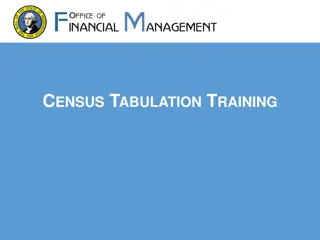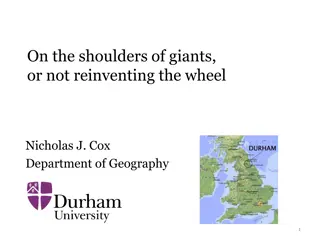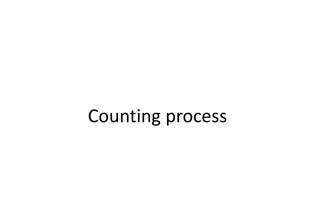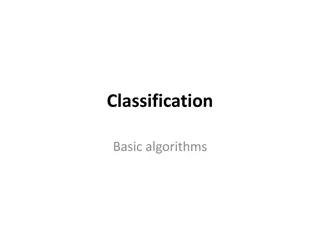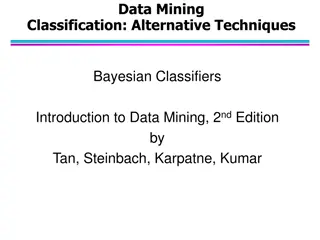Understanding BioStatistics: Classification of Data and Tabulation
BioStatistics involves the classification of data into groups based on common characteristics, allowing for analysis and inference. Classification organizes data into sequences, while tabulation systematically arranges data for easy comparison and analysis. This process helps simplify complex data, facilitate comparisons, and draw valid conclusions. Differences exist between classification as a statistical analysis process and tabulation as a data presentation technique.
Download Presentation

Please find below an Image/Link to download the presentation.
The content on the website is provided AS IS for your information and personal use only. It may not be sold, licensed, or shared on other websites without obtaining consent from the author. Download presentation by click this link. If you encounter any issues during the download, it is possible that the publisher has removed the file from their server.
E N D
Presentation Transcript
BIOSTATISTICS Classification Of Data DR. K. ARIFA BANU, ASSISTANT PROFESSOR OF ZOOLOGY HAJEE KARUTHA ROWTHER HOWDIA COLLEGE, UTHAMAPALAYAM.
Classification is the process of arranging data into sequences and groups according to their common characteristics or separating them into different but related parts. - Secrist The process of grouping large number of individual facts and observations on the basis of similarity among the items is called classification. - Stockton & Clark Classified and arranged facts speak themselves; unarranged, unorganised they are dead as mutton . - Prof. J.R. Hicks
Characteristics of classification a) Classification performs homogeneous grouping of data b) It brings out points of similarity and dissimilarities. c) The classification may be either real or imaginary d) Classification is flexible to accommodate adjustments
Types of classification a) Geographical (i.e. on the basis of area or region wise) north, east, places b) Chronological (On the basis of Temporal / Historical, i.e. with respect to time)eg Year,Month, c) Qualitative ( on the basis of character / attributes) eg 1.Male Female 2. educated - uneducated d) Numerical, quantitative (on the basis of magnitude) eg 10cm,20cm
Geographical Geographical Classification In geographical classification, the classification is based on the geographical regions. Ex: Sales of the company(In Million Rupees) (region wise) Region North South East West Sales 285 300 185 235
TABULATION (or) INTERPRETATION Tabulation may be defined, as systematic arrangement of data in column and rows. It is designed to simplify presentation of data for the purpose of analysis and statistical inferences.
Objectives of Tabulation 1. To simplify the complex data 2. To facilitate comparison 3. To economise the space 4. To draw valid inference / conclusions 5. To help for further analysis
Differences between Classification and Tabulation 1. Classification is a process of statistical analysis while tabulation is a process of presenting data is suitable structure. 2. Tabulation is a mechanical function of classification because is tabulation classified data are placed in row and columns. 3. First data are classified and presented in tables; classification is the basis for tabulation.
Classification of tables 1. Coverage (Simple and complex table) 2. Objective / purpose (General purpose / Reference table / Special table or summary table) 3. Nature of inquiry (primary and derived table).
TABULATION Simple table : Data are classified based on only one characteristic Distribution of marks Class Marks No. of students 30 40 20 40 50 20 50 60 10 Total 50
Complex Table Two-way table: Classification is based on two characteristics Class Marks Boys No. of students Girls Total 30 40 10 10 20 40 50 15 5 20 50 60 3 7 10 Total 28 22 50


